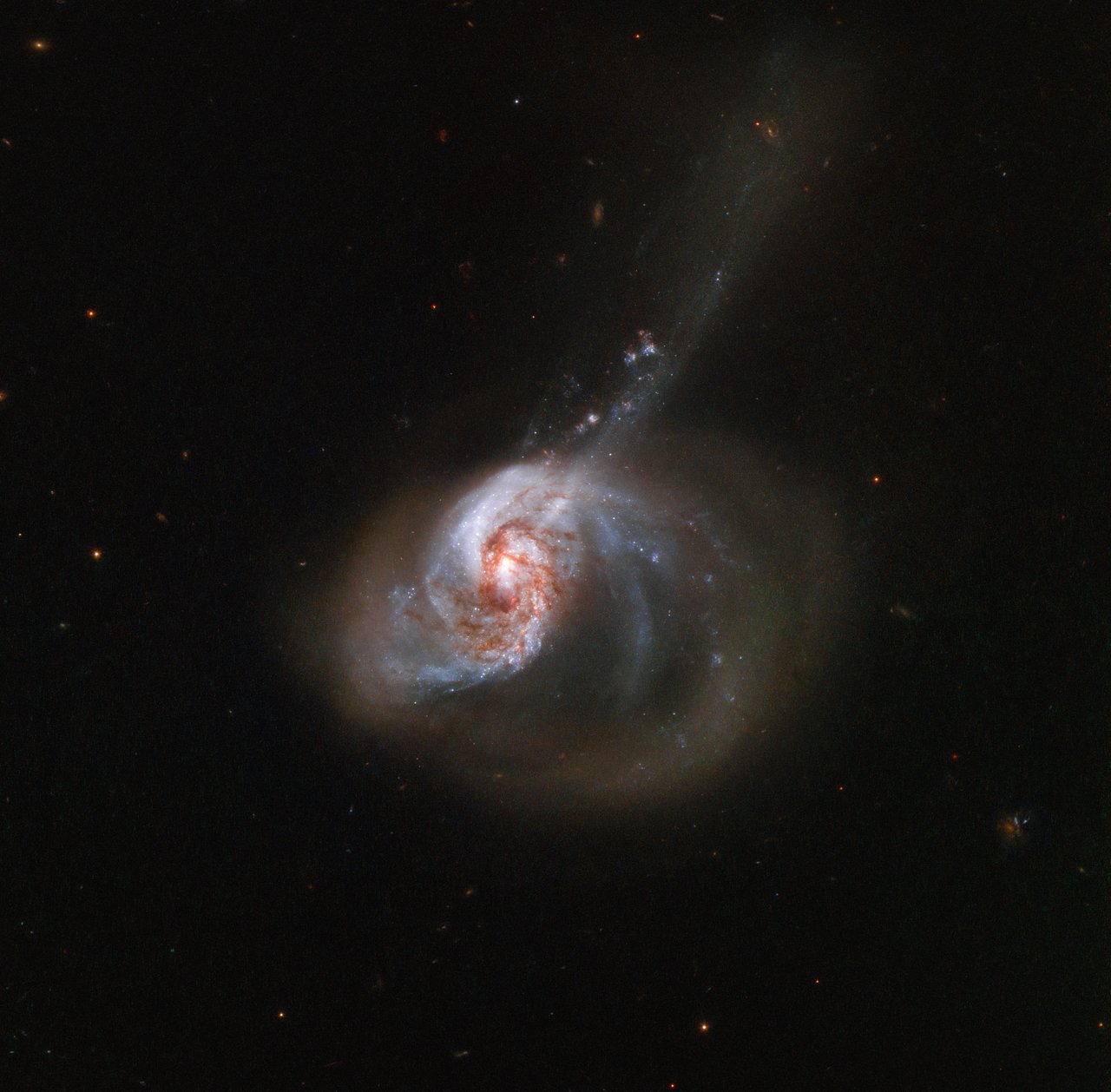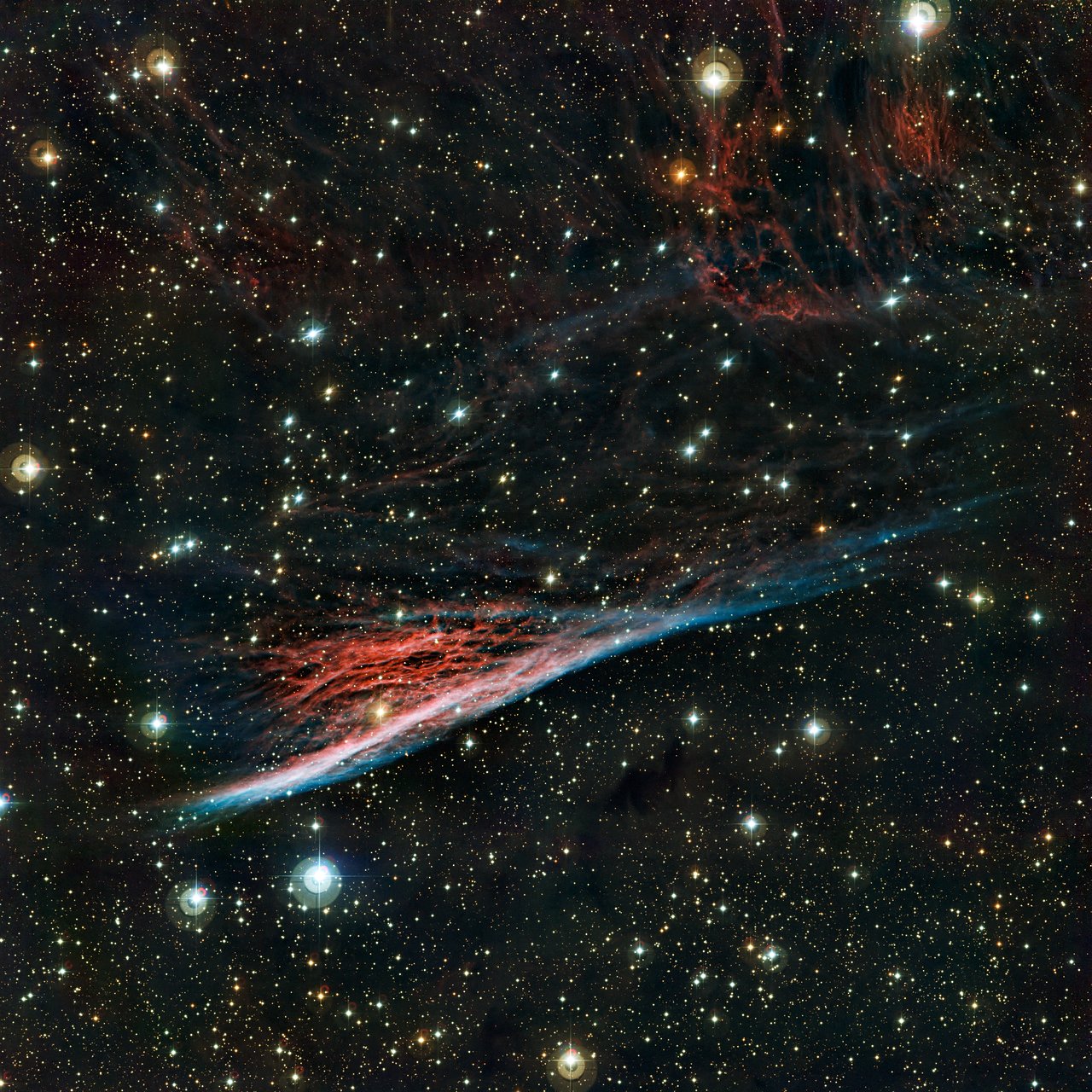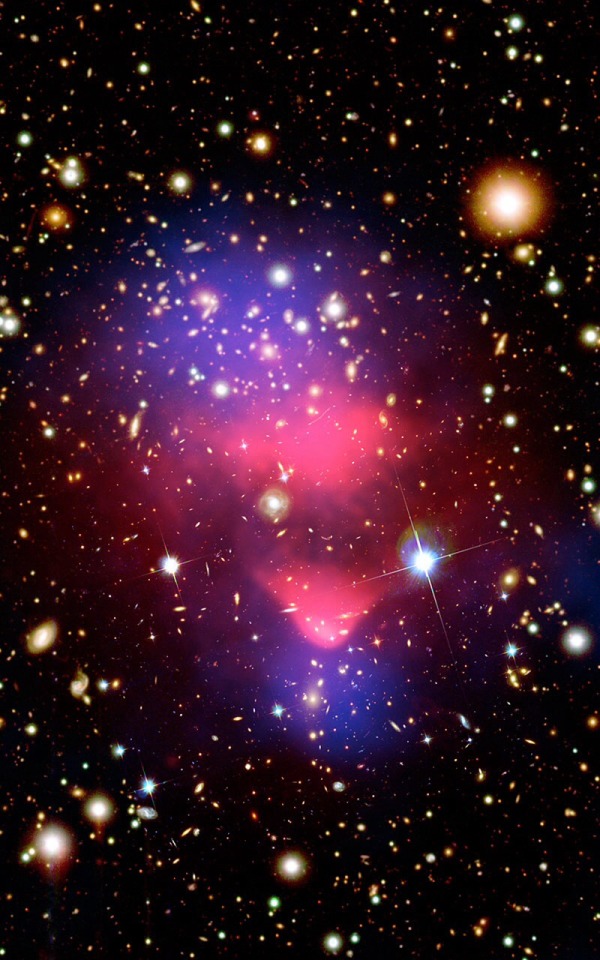Blog
NGC 1614, captured here by the NASA/ESA Hubble Space Telescope, is an eccentrically-shaped galaxy ablaze with activity. The galaxy resides about 200 million light-years from Earth and is nestled in the southern constellation of Eridanus (The River).
NGC 1614 is the result of a past galactic merger which created its peculiar appearance. The cosmic collision also drove a turbulent flow of interstellar gas from the smaller of the two galaxies involved into the nucleus of the larger one, resulting in a burst of star formation which started in the core and slowly spread outwards through the galaxy.
Owing to its turbulent past and its current appearance, astronomers classify NGC 1614 as a peculiar galaxy, a starburst galaxy, and a luminous infrared galaxy. Luminous infrared galaxies are among the most luminous objects in the local Universe — and NGC 1614 is, in fact, the second most luminous galaxy within 250 million light-years.

Patrick Bruce Metheny (/məˈθiːni/ mə-THEE-nee; born August 12, 1954) is an American jazz guitarist and composer.
He is the leader of the Pat Metheny Group and is also involved in duets, solo works, and other side projects. His style incorporates elements of progressive and contemporary jazz, Latin jazz, and jazz fusion. Metheny has three gold albums and 20 Grammy Awards and is the only person to win Grammys in 10 categories. He is the brother of jazz flugelhornist Mike Metheny.
Metheny was born in Lee’s Summit, Missouri. His father Dave played trumpet, his mother Lois sang, and his maternal grandfather Delmar was a professional trumpeter.Metheny’s first instrument was trumpet, which he was taught by his brother, Mike. His brother, father, and grandfather played trios together at home. His parents were fans of Glenn Miller and swing music. They took Metheny to concerts to hear Clark Terry and Doc Severinsen, but they had little respect for guitar. Metheny’s interest in guitar increased around 1964 when he saw the Beatles perform on TV. For his 12th birthday, his parents allowed him to buy a guitar, which was a Gibson ES-140 3/4.
Metheny’s life changed after hearing the album Four & More by Miles Davis. Soon after, he was captivated by Wes Montgomery‘s album Smokin’ at the Half Note which was released in 1965. He cites the Beatles, Miles Davis, and Wes Montgomery as having the biggest impact on his music.
When he was 15, he won a scholarship from Down Beat magazine to a one-week jazz camp where he was mentored by guitarist Attila Zoller, who then invited Metheny to New York City to see guitarist Jim Hall and bassist Ron Carter.
While playing at a club in Kansas City, he was approached by Bill Lee, a dean at the University of Miami, and offered a scholarship. After less than a week at college, Metheny realized that playing guitar all day during his teens had left him unprepared for classes. He admitted this to Lee, who offered him a job to teach instead, as the school had recently introduced electric guitar as a course of study.
more...Tony Oladipo Allen ( July 20th 1940 – 30 April 2020) was a Nigerian drummer, composer, and songwriter who lived and worked in Paris, France. Allen was the drummer and musical director of Fela Kuti‘s band Africa ’70 from 1968 to 1979, and was one of the primary co-founders of the genre of Afrobeat music. Fela once stated that, “without Tony Allen, there would be no Afrobeat.” He was described by Brian Eno as “perhaps the greatest drummer who has ever lived”.
Allen’s career and life story were documented in his 2013 autobiography Tony Allen: Master Drummer of Afrobeat, co-written with author/musician Michael E. Veal, who previously wrote a comprehensive biography of Fela Kuti.
Allen was born in Lagos, Nigeria. He began playing drums at the age of 18, while working as an engineer for a radio station. Allen was influenced by music his father listened to Jùjú, a popular Yoruba music from the 1940s, but also American jazz, and the growing highlife scene in Nigeria and Ghana. Allen worked hard to develop a unique voice on the drums, feverishly studying LPs and magazine articles by Max Roach and Art Blakey, but also revolutionary Ghanaian drummer Guy Warren (later known as Kofi Ghanaba – who developed a highly sought-after sound that mixed tribal Ghanaian drumming with bop – working with Dizzy Gillespie, Charlie Parker, Thelonious Monk, and Max Roach).
Allen was hired by “Sir” Victor Olaiya to play claves with his highlife band, the Cool Cats. Allen was able to fill the drum set chair when the former Cool Cats drummer left the band. Allen later played with Agu Norris and the Heatwaves, the Nigerian Messengers, and the Melody Makers.
more...Alvis Edgar Owens Jr. (August 12, 1929 – March 25, 2006), known professionally as Buck Owens, was an American musician, singer, songwriter and band leader. He was the front man for Buck Owens and the Buckaroos, which had 21 No. 1 hits on the Billboard country music charts. He pioneered what came to be called the Bakersfield sound, named in honor of Bakersfield, California, Owens’ adopted home, and the city from which he drew inspiration for what he preferred to call “American music”.
While the Buckaroos originally featured a fiddle and retained pedal steel guitar into the 1970s, their sound on records and onstage was always more stripped-down and elemental. The band’s signature style was based on simple story lines, infectious choruses, a twangy electric guitar, an insistent rhythm supplied by a drum track placed forward in the mix, and high, two-part harmonies featuring Owens and his guitarist Don Rich.
From 1969 to 1986, Owens co-hosted the popular CBS television variety show Hee Haw with Roy Clark. According to his son, Buddy Alan (Owens), the accidental 1974 death of Rich, his best friend, devastated him for years and impacted his creative efforts until he performed with Dwight Yoakam in 1988.
Owens is a member of both the Country Music Hall of Fame and Nashville Songwriters Hall of Fame.
Owens was born on a farm in Sherman, Texas, to Alvis Edgar Owens Sr. and Maicie Azel (née Ellington).
In the biography About Buck., Rich Kienzle writes: “‘Buck’ was a donkey on the Owens farm.” “When Alvis Jr. was three or four years old, he walked into the house and announced that his name also was “Buck.” That was fine with the family, and the boy’s name became “Buck” from then on.” He attended public school for grades 1–3 in Garland, Texas.
Owens’ family moved to Mesa, Arizona, in 1937 during the Dust Bowl and Great Depression. While attending school in Arizona, Owens found that while he disliked formal schoolwork, he could often satisfy class requirements by singing or performing in school plays. As a result, he began to take part in such activities whenever he could.
more...
oseph Charles “Joe” Jones (August 12, 1926 – November 27, 2005) was an American R&B singer, songwriter and arranger, who was born in New Orleans, Louisiana. Jones is also generally credited with discovering the Dixie Cups. He also worked with B.B. King. As a singer, Jones had his biggest hit in the form of the Top Five 1960 R&B hit “You Talk Too Much“, which also reached No. 3 on the Billboard Hot 100 chart.
Jones served in the U.S. Navy, where he played piano in a band, before studying music at the Juilliard Conservatory of Music. He formed a band, Joe Jones and his Atomic Rebops, in the late 1940s; band members played on Roy Brown‘s 1947 hit “Good Rocking Tonight“. He was expelled from the New Orleans local chapter of the American Federation of Musicians for attempting to set up a rival organization but was later reinstated.
Jones became a valet, then pianist and arranger for B.B. King. He recorded his first solo single, “Adam Bit the Apple”, for Capitol Records in 1954. He also discovered Shirley and Lee, whose recording of “Let the Good Times Roll” became a hit in 1956. In 1960, a re-recording of a song he had first recorded in 1958, “You Talk Too Much” on Roulette Records, became a national success,[4] but his subsequent releases were less successful.
https://www.youtube.com/watch?v=2GOYYbiEul0
more...The oddly shaped Pencil Nebula (NGC 2736) is pictured in this image from ESO’s La Silla Observatory in Chile. This nebula is a small part of a huge remnant left over after a supernova explosion that took place about 11 000 years ago. The image was produced by the Wide Field Imager on the MPG/ESO 2.2-metre telescope at ESO’s La Silla Observatory in Chile.

Thetakudi Harihara Vinayakram (born 11 August 1942), also known as Vikku Vinayakram, is the legendary Grammy Award–winning (Planet Drum)Indian percussionist. He plays Carnatic music with the ghatam, an earthen pot, and is credited with popularising the ghatam. He is also known as the God of ghatam.
He was awarded the Padma Shri, given by Government of India in 2002, and later the 2012 Sangeet Natak Akademi Fellowship, the highest honour in the performing arts conferred by the Sangeet Natak Akademi, India’s National Academy for Music, Dance and Drama. Finally he was awarded the Padma Bhushan in 2014.
more...John Anthony Pompeo, better known as Johnny Rae (August 11, 1934 – September 4, 1993), was an American jazz drummer and vibraphonist.
Born in Saugus, Massachusetts, Rae graduated from East Boston High School in 1952 and studied music at the New England Conservatory and at the Berklee College of Music in the early 1950s. His mother was a night club pianist in the Boston area. His first major professional gig was with Herb Pomeroy in 1953-54; following this he played with George Shearing (1955–56), Johnny Smith(1956), Ralph Sharon (1957), Cozy Cole (1957–58), Herbie Mann (1959–60), Cal Tjader (1961–66, 1968–70), Stan Getz (1962), Gábor Szabó, Charlie Byrd, Earl Hines, Art Van Damme, and Barney Kessel. In addition to modern jazz, he also played Latin jazz percussion.
Through the 1980s Rae worked in music education and authored several instruction books. He was also a disc jockey in San Francisco for many years. From 1982 until his passing, Rae led a tribute band called “Radcliffe” in honor of his former bandleader, Cal Tjader. Musicians in the combo included Mark Levine, Robb Fisher, Vince Lateano, Willie Colon, Al Zulaica, Poncho Sanchez, and Dick Mitchell. John was married to Mary Carroll, a San Francisco technical recruiter and author, for three years. He died on September 4, 1993.
more...Eldridge Freeman (August 11, 1921 – 2006), also known as “Buzz” Freeman or “Bruz” Freeman, was an American jazz drummer.
Born in Chicago, with his brothers, guitarist George Freeman and tenor saxophonist Von Freeman, he played for several years in the house band at the Pershing Hotel. He was also the uncle of Chico Freeman, the son of Von Freeman.
In 1950, he was a member of John Young‘s trio with LeRoy Jackson on bass, and recorded with Young’s orchestra backing vocalist Lurlean Hunter.
In the mid-1950s, he was a member of the Hampton Hawes Quartet, with Red Mitchell and Jim Hall, and with line-ups led by Herb Geller. In 1950, with his brothers George and Von (originally misidentified as Claude McLin), LeRoy Jackson, and Chris Anderson, he played with Charlie Parker shortly before his death, at a jam session recorded at Bird’s apartment which was released in 1960 by Savoy. In 1977-8, he joined a short-lived band based in California, led by Kenny Mann and with Britt Woodman on trombone.
more...Waldemar Bastos Memorial
Luanda — Angolan musician Waldemar Bastos died Monday in Lisbon (Portugal) of disease at the age of 66, Angop learned. The information was released by the culture attaché of the Angolan embassy in Lisbon, Luandino de Carvalho, who said Waldemar Bastos had been sick for some time. Waldemar dos Santos Alonso de Almeida Bastos, also known as Waldemar Bastos, was born in M’Banza Kongo, northern Zaire province, on 4 January 1954. The musician started his career very young, having left the country for Portugal after Angola’s independence in 1975. In his 40-year career, Waldemar Bastos was awarded the diploma of founding member of the Angolan Union of Artists and Composers (UNAC-SA) and the World Music Award in 1999. The New York Times in 1999 considered his record “Black Light” as one of the best pieces of its time. In 2018, Bastos was awarded the National Culture and Arts Prize.
more...The Bullet Cluster (1E 0657-56) consists of two colliding clusters of galaxies. Strictly speaking, the name Bullet Cluster refers to the smaller subcluster, moving away from the larger one. It is at a comoving radial distance of 1.141 Gpc (3.72 billion light-years).
Gravitational lensing studies of the Bullet Cluster are claimed to provide the best evidence to date for the existence of dark matter.

Ian Scott Anderson MBE (born 10 August 1947) is a Scottish-born British musician, singer and songwriter best known for his work as the lead vocalist, flautist and acoustic guitarist of British rock band Jethro Tull. Anderson is a multi-instrumentalist who, in addition to flute, plays keyboards, bass guitar, bouzouki, balalaika, saxophone, harmonica, and a variety of whistles. His solo work began with the 1983 album Walk into Light, and since then he has released another five works, including the sequel to the Jethro Tull album Thick as a Brick (1972) in 2012, entitled Thick as a Brick 2.
Ian Anderson was born in Dunfermline, Fife, Scotland, the youngest of three brothers. His father, James Anderson, ran the RSA Boiler Fluid Company in East Port, Dunfermline. Anderson spent the first part of his childhood in Edinburgh. He was influenced by his father’s big band and jazz records and the emergence of rock music, but was disenchanted with the “show biz” style of early American rock and roll stars like Elvis Presley.
His family moved to Blackpool, Lancashire, England, in 1959, where he was educated at Blackpool Grammar School. In a 2011 interview, Anderson said he was asked to leave grammar school for refusing to submit to corporal punishment (permitted at that time). He studied fine art at Blackpool College of Art from 1964 to 1966 while living in Lytham St Annes.
more...Charles H. Israels (born August 10, 1936) is a composer, arranger, and bassist who is best known for his work with the Bill Evans Trio. He has also worked with Billie Holiday, Benny Goodman, Coleman Hawkins, Stan Getz, Herbie Hancock, J. J. Johnson, John Coltrane, and Judy Collins.
Born in New York City, Chuck Israels was raised in a musical family which moved to Cleveland, Ohio when he was 10. His stepfather Mordecai Bauman was a singer who performed extensively with composer Hanns Eisler. He, along with Israels’ mother, Irma Commanday, created a home environment in which music was a part of normal daily activity. Paul Robeson, Pete Seeger, and The Weavers were visitors to the Bauman home. In 1948, the appearance of Louis Armstrong‘s All Stars in a concert series produced by his parents gave him his first opportunity to meet and hear jazz musicians.
In college, Israels had the opportunity to perform with Billie Holiday. His first professional job after college was working with pianist Bud Powell in Paris. His first professional recording was Stereo Drive (aka Coltrane Time) with John Coltrane, Cecil Taylor, Kenny Dorham, and Louis Hayes. The recording showcased Israels as a composer with his composition “Double Clutching”. Israels is best known for his work with the Bill Evans Trio from 1961 through 1966 and for the Jazz Repertory as Director of the National Jazz Ensemble from 1973 to 1981. He made recordings with Kronos Quartetand Rosemary Clooney in 1985. He was the Director of Jazz Studies at Western Washington University in Bellingham, Washington until 2010. In 2011, he created the Chuck Israels Jazz Orchestra and recorded Second Wind: A Tribute to the Music of Bill Evans in 2013. Humphrey Lyttelton, presenting Jazz 625 in 1965, said that Israels was “a superb technician who handles the double bass as easily as if it were a guitar…Chuck Israels is one of the reasons why musicians have come reeling away from performances by the Bill Evans Trio in a mood poised between elation and utter despair.”
more...More Posts
- Daily Roots The Planets
- Cosmos NGC 1300
- Bob Weir
- Roger Hawkins
- Billy Cox
- Roy Hargrove
- Big Joe Williams
- World Music Meszecsinka
- Daily Roots Jimmy London
- Cosmos GRB 221009A
- Fela Kuti
- Mickey Guitar Baker
- Freddy Cole
- Nellie Lutcher
- World Music Dania Neko ft. Chancha Via Circuito
- Daily Roots Ron Wilson
- Cosmos NGC 7635
- Babe Stovall
- Justin Hayward
- Kazumi Watanabe